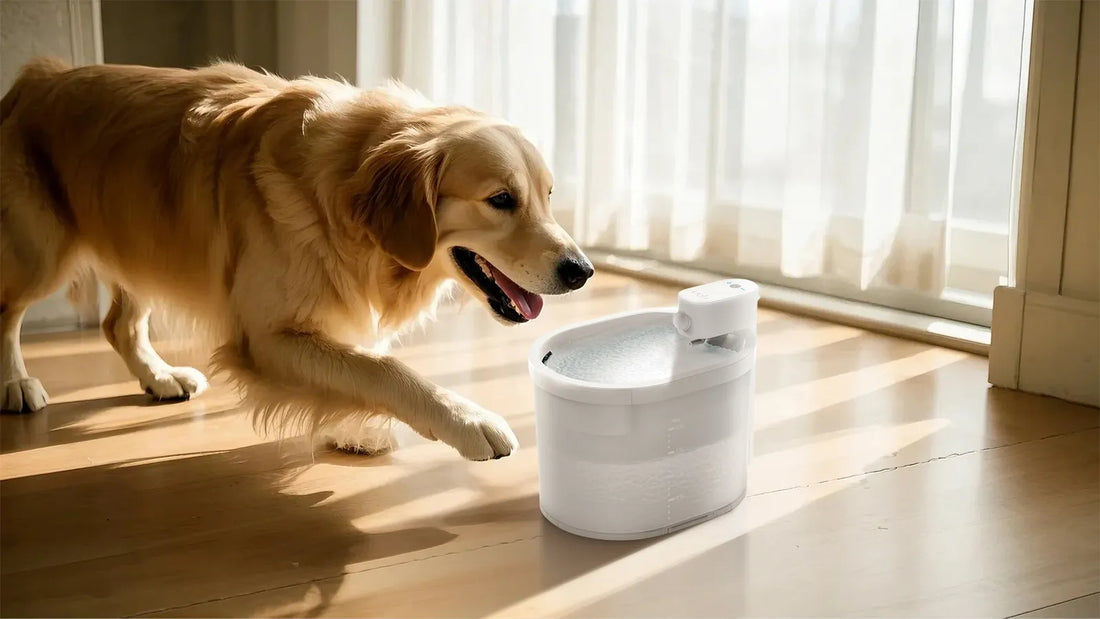As a responsible pet owner, ensuring your dog stays hydrated is a top priority. However, knowing the right time to offer water after a walk can be tricky. Should you let your dog drink immediately, or is it better to wait? This article explores the factors that influence how long after a walk to give your dog water, helping you make informed decisions for your furry friend's health and well-being.
Understanding Your Dog's Hydration Needs
Dogs, like humans, need water to survive. Water plays a crucial role in regulating body temperature, aiding digestion, and maintaining overall health. During a walk, especially in warm weather or during vigorous exercise, your dog loses water through panting and sweating through their paw pads. This makes it essential to replenish their fluids afterward.
However, the timing of when to offer water depends on several factors, including the intensity of the walk, the weather conditions, and your dog's individual health. For example, a short stroll in cool weather may not require immediate hydration, while a long hike in the heat might necessitate a quick drink.
The Risks of Offering Water Too Soon
While it might seem logical to let your dog drink water immediately after a walk, doing so can sometimes pose risks. One common concern is the possibility of bloat, a life-threatening condition where the stomach fills with gas or fluid and twists on itself. Bloat is more common in large, deep-chested breeds, but any dog can be affected.
Drinking too much water too quickly after exercise can also lead to water intoxication, a rare but serious condition where the body's electrolyte balance is disrupted. Symptoms include lethargy, vomiting, and in severe cases, seizures or coma. To minimize these risks, it's important to monitor your dog's water intake and avoid letting them gulp large amounts at once.
How Long Should You Wait?
So, how long after a walk should you give your dog water? The answer varies depending on the circumstances. Here are some general guidelines:
- Short Walks in Cool Weather: If your walk was brief and the weather is mild, you can offer water immediately. Just ensure your dog drinks slowly and doesn't overconsume.
- Long Walks or Hot Weather: After a strenuous walk or in hot conditions, wait 5 to 10 minutes before offering water. This allows your dog's body temperature and heart rate to stabilize.
- Intense Exercise: For activities like running or hiking, wait 15 to 20 minutes before providing water. This gives your dog time to cool down and reduces the risk of bloat or water intoxication.
Signs Your Dog Needs Water
Knowing when your dog is thirsty is just as important as timing their water intake. Look for these signs of dehydration:
- Excessive panting
- Dry nose or gums
- Lethargy or weakness
- Loss of skin elasticity (when gently pulled, the skin doesn't snap back quickly)
If you notice any of these symptoms, offer water immediately, even if it's sooner than the recommended waiting period. Dehydration can be dangerous and requires prompt attention.
Tips for Safe Hydration
To ensure your dog stays hydrated without risking their health, follow these tips:
- Offer Small Amounts: Instead of filling the water bowl to the brim, provide smaller portions and refill as needed.
- Use a Slow-Feeder Bowl: These bowls are designed to prevent gulping, encouraging your dog to drink slowly.
- Monitor Water Intake: Keep track of how much your dog drinks daily, especially after exercise. This helps you identify any unusual patterns.
- Provide Fresh Water: Always ensure your dog has access to clean, fresh water, particularly during hot weather or after physical activity.
Special Considerations for Puppies and Senior Dogs
Puppies and senior dogs have unique hydration needs that require extra attention. Puppies are more active and may need water more frequently, but their small size makes them susceptible to water intoxication. Senior dogs, on the other hand, may have underlying health conditions that affect their water intake. Always consult your veterinarian for tailored advice.
Weather and Environmental Factors
The weather and environment play a significant role in determining when to offer water. In hot or humid conditions, your dog loses more fluids through panting and may need water sooner. Conversely, in cold weather, your dog may not feel as thirsty, but hydration is still essential. Be mindful of the temperature and adjust your approach accordingly.
Hydration During Travel
If you're traveling with your dog, hydration becomes even more critical. Long car rides or flights can dehydrate your pet, so offer water regularly, especially during breaks. Use a portable water bottle or collapsible bowl to make it easier for your dog to drink on the go.
When to Consult a Veterinarian
If you're unsure about your dog's hydration needs or notice any concerning symptoms, don't hesitate to consult your veterinarian. They can provide personalized recommendations based on your dog's breed, age, and health status. Early intervention can prevent serious complications and ensure your dog stays healthy and happy.
Hydrating your dog after a walk is a simple yet essential part of pet care. By understanding the factors that influence when and how much water to offer, you can keep your furry friend safe and hydrated. Remember, every dog is unique, so pay attention to their individual needs and adjust your approach as necessary. Your dog's health and well-being are worth the extra effort!

![[🎃Halloween Sale]UAHPET Stainless Steel Self-Cleaning Cat Litter Box](http://www.uahpet.com/cdn/shop/files/1-cat-litter-box.jpg?v=1759128420&width=1600)












